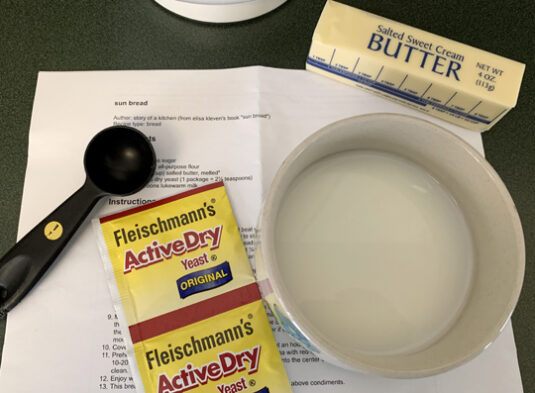 Who doesn’t love the smell of fresh bread baking in the oven? And thanks to a truly adorable book and recipe, you can also get a little sunshine front and center! Let’s head to Katie’s test kitchen for a look!
Who doesn’t love the smell of fresh bread baking in the oven? And thanks to a truly adorable book and recipe, you can also get a little sunshine front and center! Let’s head to Katie’s test kitchen for a look!
It was a snowy day, when the New Jersey skies were dark and gray, that I rediscovered the book Sun Bread by Elisa Kleven (Dutton Children’s Books, 2001 – read here by Camp WildWoodz). In the story, the animals of the town have experienced a long hard winter. They are all ready for the seasons to change and for the sun to return. The local baker decides to mix together her own sunshine from the cozy comfort of her bakery. The end result is delicious hot sun bread, which she shares to the delight of the town and their joy awakens the sun from its winter sleep.
I was surprised that my copy of Sun Bread did not have the recipe, which apparently was not included in later printings of the book. After a quick online search, I was able to find the recipe, along with a few personal minor adaptations and suggestions, in a blog post written by Lisa at Story of a Kitchen.
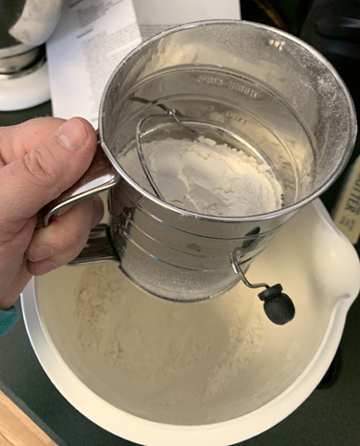 Bread is relatively easy to make. It just takes time, strong hands and a little patience to allow the yeast to work its magic. I had all of the ingredients in my pantry, so I got to work. I followed the instructions exactly as written by mixing everything together and kneading the dough, adding additional flour along the way.
Bread is relatively easy to make. It just takes time, strong hands and a little patience to allow the yeast to work its magic. I had all of the ingredients in my pantry, so I got to work. I followed the instructions exactly as written by mixing everything together and kneading the dough, adding additional flour along the way.

After letting the dough rest and rise for an hour, I deflated and kneaded the larger ball of dough for a second time. I cut the dough ball in half and started creating my sun face. I decided to make the corona of my sun into simple little swirls.

I left the doughy sun to rise for another hour and then slid it into the oven to bake. I checked the bread after 10 minutes and I’m glad I did because it was already a nice golden brown and perfectly cooked through.
It didn’t take long for my teenager to descend upon the kitchen and ask to try a slice of sun bread. It was absolutely delicious! We tried it plain, with butter, and with a variety of different jams. It didn’t matter what we used as a spread, it was wholesomely good. I wish I could tell you how sun bread tastes the next day, but it didn’t last that long. My family snacked on it throughout the day, and we finished the small amount that was left that evening as garlic bread with our spaghetti dinner.

The sun bread recipe is ideal for parents to make with their children. It’s a super simple recipe to follow, you can be creative designing the sun face and corona, and the end result is scrumptious. And let’s be honest… any day is a good day to brighten your spirits with fresh sun bread!

 This week, Katie challenged her Greek mythology knowledge with an at-home escape room worthy of Olympus! And given it took six hours to complete, I’m going to applaud her…shall we say…Herculean efforts (ooooo bad joke! baaaaad joke)! OK Katie, take it away!
This week, Katie challenged her Greek mythology knowledge with an at-home escape room worthy of Olympus! And given it took six hours to complete, I’m going to applaud her…shall we say…Herculean efforts (ooooo bad joke! baaaaad joke)! OK Katie, take it away!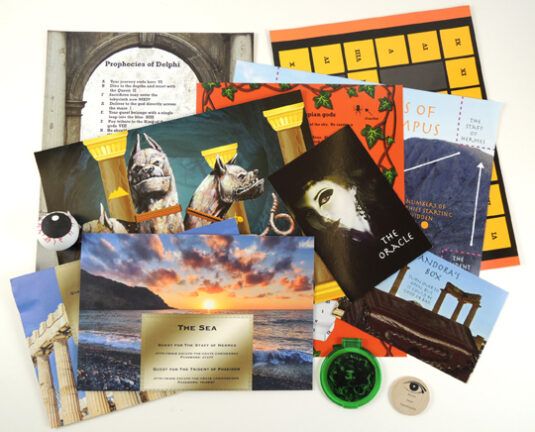 The suggested age for Escape the Crate is 10+ with adult supervision, though younger players will likely enjoy participating along with their grown-ups. Some of the themes are a bit scarier, such as murder mysteries or fighting mythological characters (as I would soon discover in The Games of Olympus), but Escape the Crate does a fantastic job alerting players to when there are darker moments. Some of the crates have very intense themes – like encountering the infamous Jack the Ripper – so those boxes actually have two games inside: one for adults and a version that is more family friendly.
The suggested age for Escape the Crate is 10+ with adult supervision, though younger players will likely enjoy participating along with their grown-ups. Some of the themes are a bit scarier, such as murder mysteries or fighting mythological characters (as I would soon discover in The Games of Olympus), but Escape the Crate does a fantastic job alerting players to when there are darker moments. Some of the crates have very intense themes – like encountering the infamous Jack the Ripper – so those boxes actually have two games inside: one for adults and a version that is more family friendly.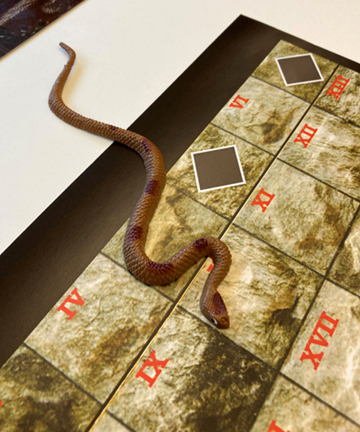 Much like the Finder Seekers kit (which I review
Much like the Finder Seekers kit (which I review 
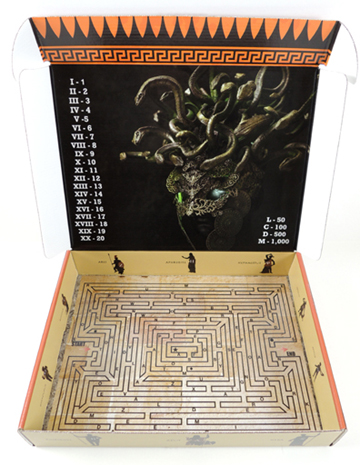 In my opinion, however, Escape the Crate is designed to be played by a group of people and would be an ideal party game. I honestly believe if I had been working with others, we would have gotten through the mystery much faster. Not to say that one person can’t do it entirely on their own, it’s just much more difficult for a single player to finish.
In my opinion, however, Escape the Crate is designed to be played by a group of people and would be an ideal party game. I honestly believe if I had been working with others, we would have gotten through the mystery much faster. Not to say that one person can’t do it entirely on their own, it’s just much more difficult for a single player to finish. Psst! Is there a game or at-home escape room you’ve heard about and want me to test? Send an email to
Psst! Is there a game or at-home escape room you’ve heard about and want me to test? Send an email to 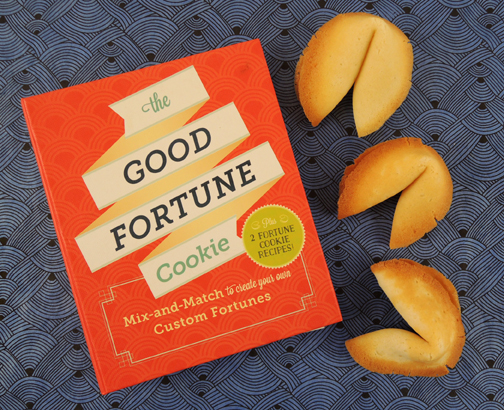 The time was summer. The place was Wisconsin. Katie was shopping at an antique mall when she discovered The Good Fortune Cookie (Chronicle Books, 2015) inside a dealer nook. After flipping through a few pages and laughing at the unique format, she knew the book belonged at our library. As an added bonus, it included recipes to make your own fortune cookies, so to the literary testing kitchen we go! Take it away Katie!
The time was summer. The place was Wisconsin. Katie was shopping at an antique mall when she discovered The Good Fortune Cookie (Chronicle Books, 2015) inside a dealer nook. After flipping through a few pages and laughing at the unique format, she knew the book belonged at our library. As an added bonus, it included recipes to make your own fortune cookies, so to the literary testing kitchen we go! Take it away Katie!
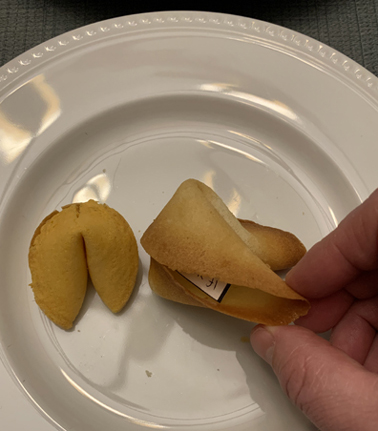
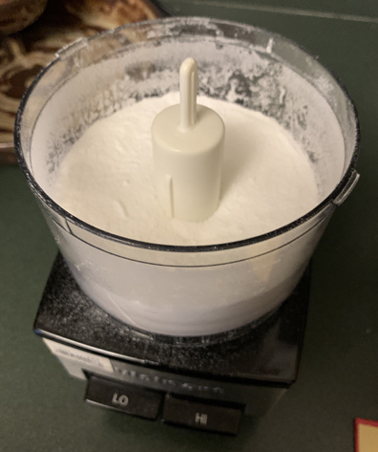
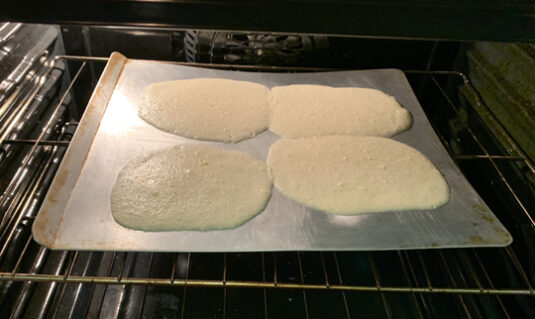
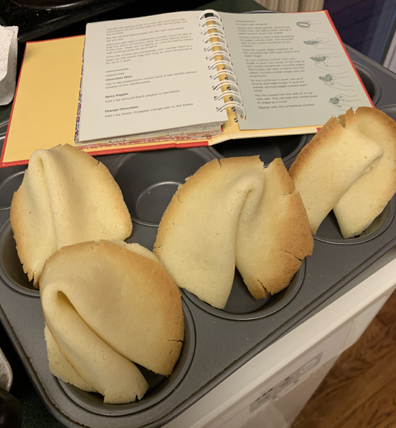
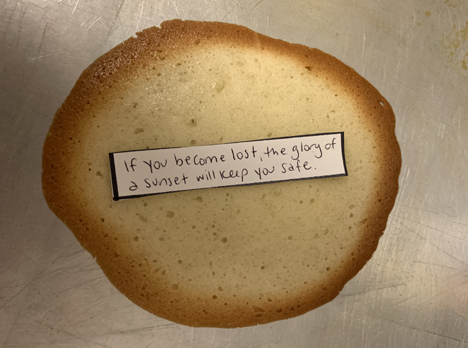
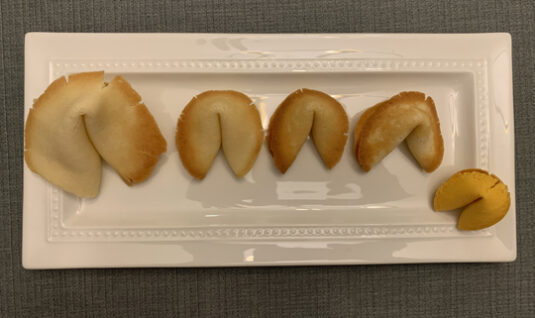 After sampling one (okay, three) cookies throughout the baking process, I can attest that they are really delicious. In the future, I think I’ll replace the almond extract with vanilla, or add some lemon or orange zest to enhance their flavor. There’s also a recipe for chocolate fortune cookies which basically reduces the amount of flour and adds cocoa powder.
After sampling one (okay, three) cookies throughout the baking process, I can attest that they are really delicious. In the future, I think I’ll replace the almond extract with vanilla, or add some lemon or orange zest to enhance their flavor. There’s also a recipe for chocolate fortune cookies which basically reduces the amount of flour and adds cocoa powder.